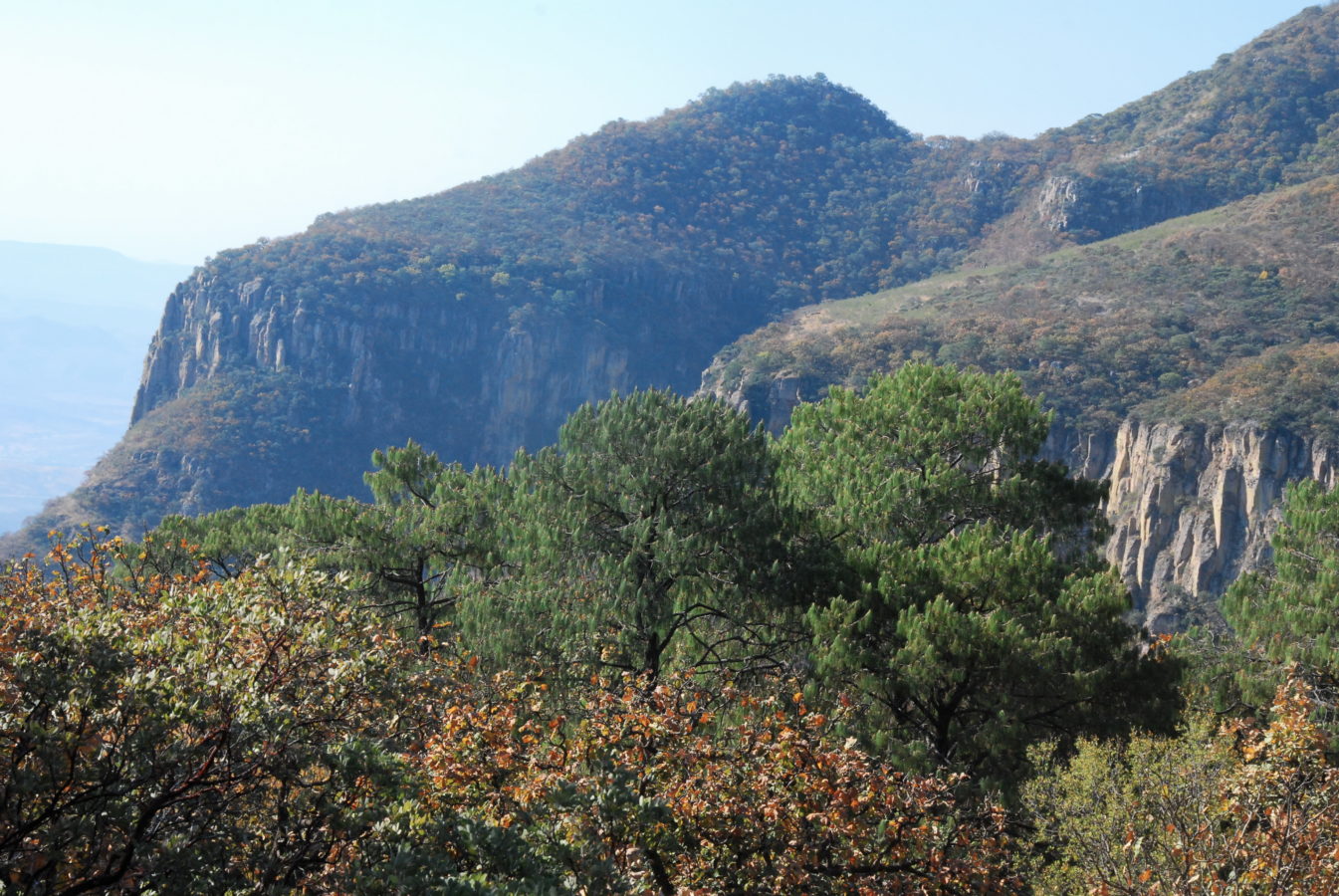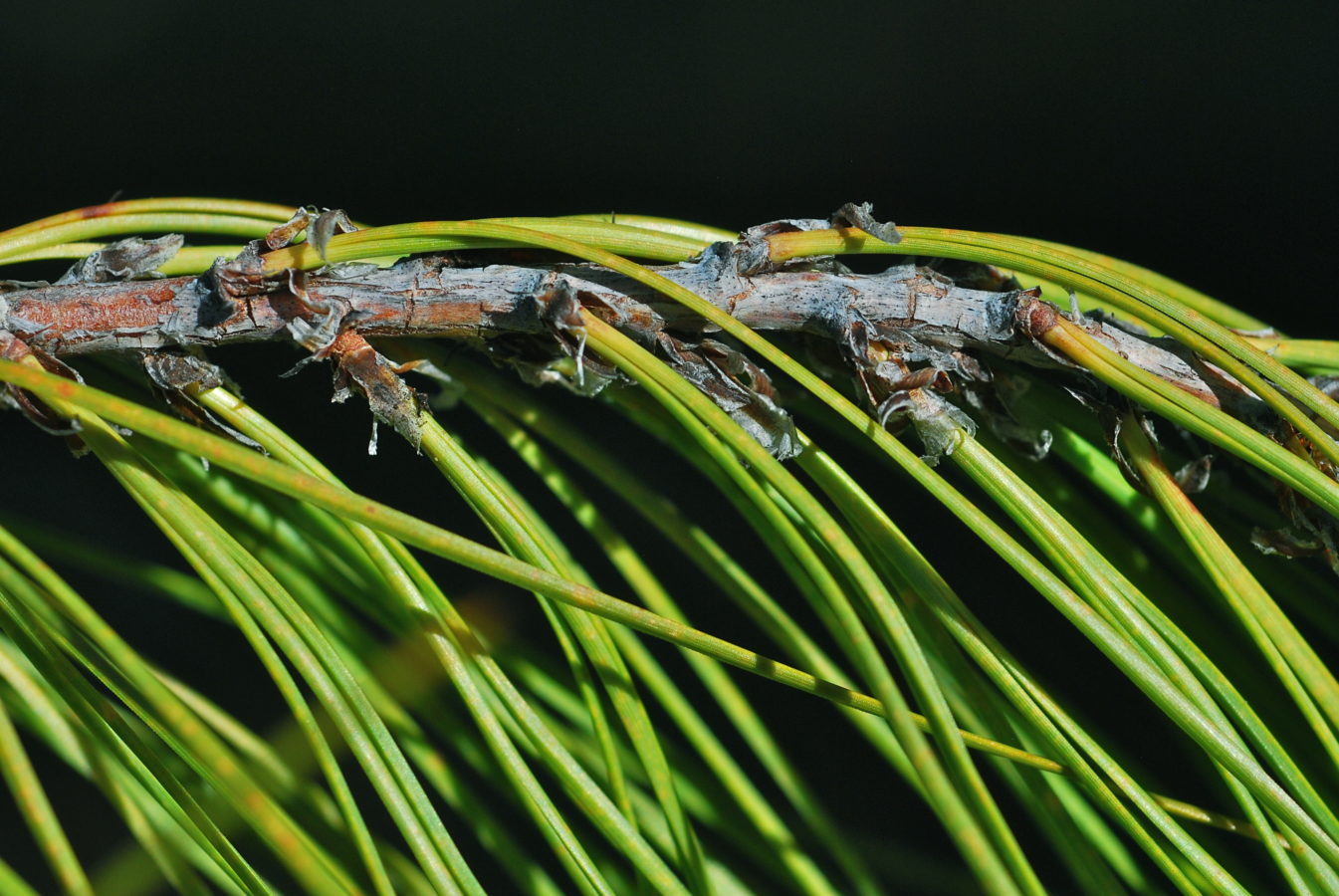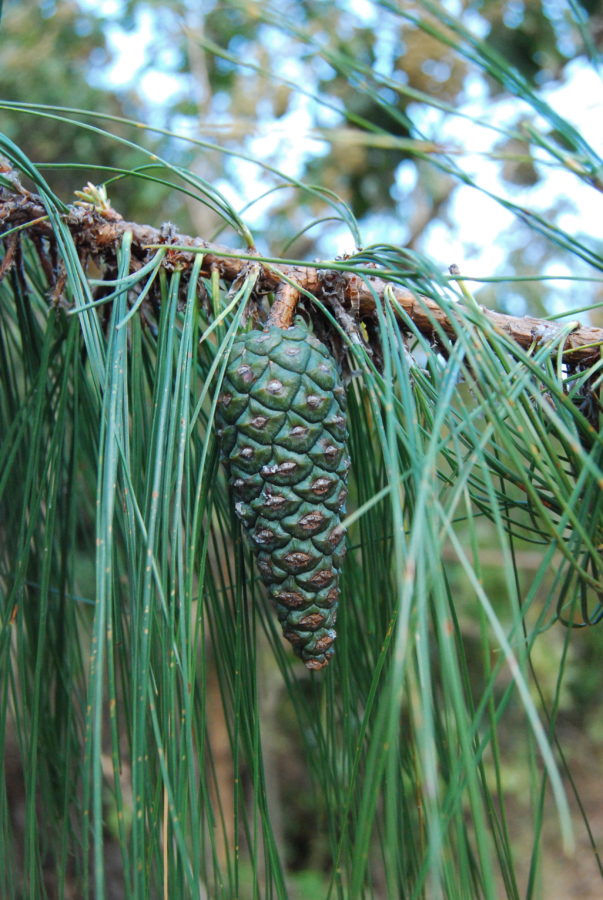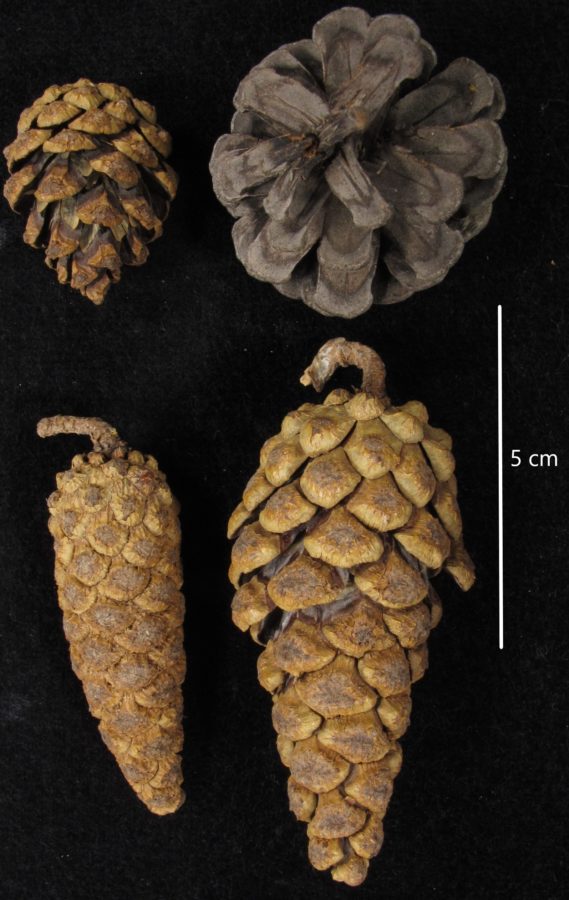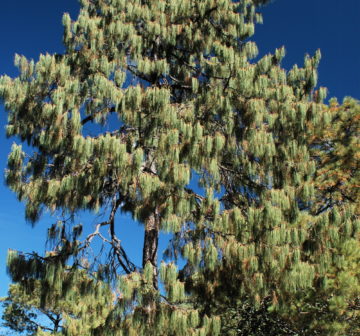Pinaceae
Pinus lumholtzii
A widespread but relatively infrequent species from Mexico's Sierra Madre Occidental. The species is suspected to be in decline due to logging.
Human Uses
Pinus lumholtzii is generally known as 'Pino Triste' for its striking pendulous foliage. It has been overexploited with other pines in some areas for timber, but due to its scattered occurrence, especially in pine-oak forest and in drier sites, it is not a commercially important tree. This species, despite its striking foliage, is not known in cultivation
References and further reading
- Comisión Nacional Forestal (CONAFOR) (2009) Inventario Nacional Forestal y de Suelos de México 2004-2009. (1 Ed) Comisión Nacional Forestal, Zapopan, Jalisco, México
- Farjon, A. 2013. Pinus lumholtzii. The IUCN Red List of Threatened Species 2013: e.T42377A2976271. http://dx.doi.org/10.2305/IUCN.UK.2013-1.RLTS.T42377A2976271.en. Downloaded on 07 August 2017
- Reyes-Murillo, C.A., Hernández-Díaz, J.C., Heinze, B., Prieto-Ruiz, J.Á., López-Sánchez, C.A. and Wehenkel, C., 2016. Spatial genetic structure in seed stands of Pinus lumholtzii BL Rob. & Fernald in Durango, Mexico. Tree Genetics & Genomes, 12(4), 1-10.
- Silva-Flores R, Pérez-Verdín G, Wehenkel C (2014) Patterns of tree species diversity in relation to climatic factors on the Sierra Madre Occidental, Mexico. PLoS One 9(8):e105034

